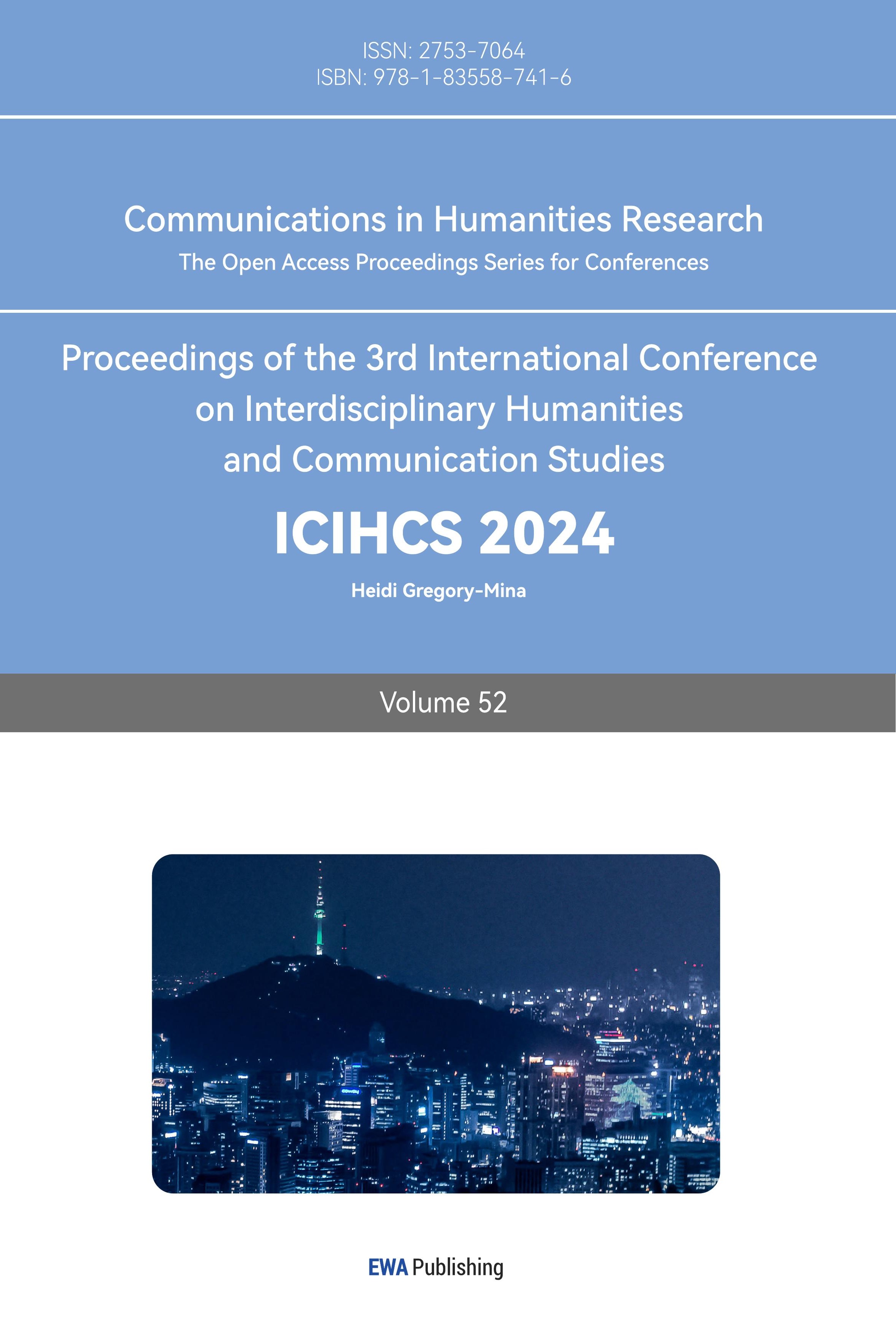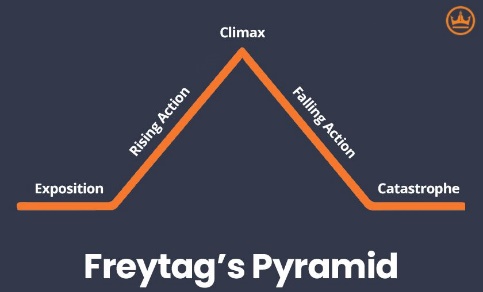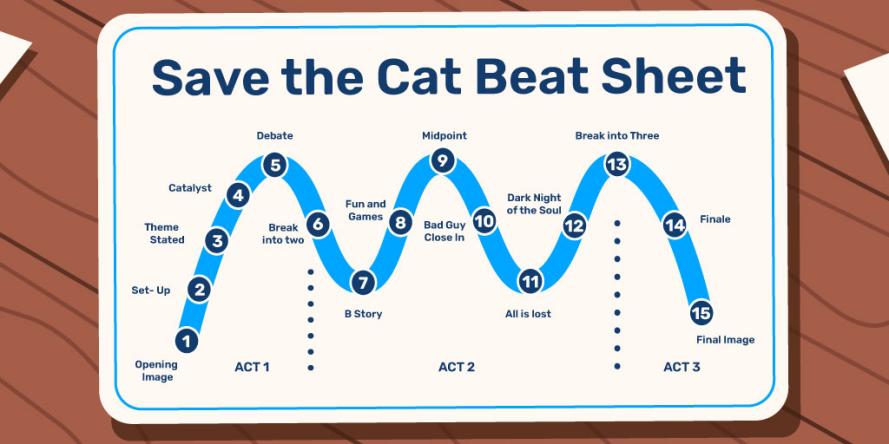1. Introduction
As a dynamic, contemporary infotainment vehicle woven from a mixture of art forms, animation is indispensable in today's cultural communication and entertainment system. In the past, many people defined animation as being for adults and not suitable for adults, and this was indeed in line with the initial market segment and the original intention of animation. Regardless, nowadays, as more and more independent animators, studios, or large companies create a variety of animations for the audience, objectively, we will find that animation has influenced a large portion of adults. The causes and underlying logic of this phenomenon are very complex. However, one of the most important reasons is that animation is gradually becoming a medium that can profoundly affect the emotions and feelings of its audience.
Human beings are very complex creatures, not only because of their complex physiological systems and behavioural logic but also because the human mind is obscure and cryptic and is replenished with numerous thoughts and ideas at all times. Human emotions have always added a lot of fascinating colours to this biological community, and many works of art and quotes throughout history have evolved from human emotions. However, there are considerable thoughts, and the only way to stir the ripples of human emotions is to sympathise with some of them. As a form of media that maps and embellishes the truth of reality, animation has many qualities that resonate with its audience. Animation can create a different chemistry than realistic film through clever compositions, colours, music and sound effects.
To date, industry research on how animation affects the emotions of its viewers has mainly centred on visual impact. Kennedy examined how the colour of different lights and their variations swayed viewers' mobilisation of emotions and found that while colour affects emotions, it is not always detected by human physiological indicators such as galvanic skin response [1]. Furthermore, Uhrig highlighted that animation can exaggerate emotions through visual and auditory guidance, resulting in a more substantial emotional impact compared to live-action media. It is worth noting, however, that while the uniqueness of animation makes it more accessible to a broader audience, the influence of variables such as culture, age, or background often accompanies this viewpoint with a lack of rigorous academic logic and insufficient research cases. Whether the impact of animation on human emotions can cross cultures, ages, and genders is still a topic worthy of study. As animation production technology continues evolving and AI influences the art industry, whether such a question can be studied in depth through more artistic and refined work is also worth exploring.
This paper aims to explore how animation evokes emotional resonance in audiences through a systematic analysis of emotional expression, narrative strategy and audience emotional response. Through specific case studies, this study will delve into the actual effects of animation's emotional impact.
2. Emotional expression in animation
Human beings are complex. The body is made up of 70% water, while the mind is forged by the tricks of the flame called emotions. Although there is no direct comparability between the complexity of reality and that of abstraction, the human heart is unpredictable, emotions are complicated and changeable, and it is even more illogical to try to control the changes in emotions. However, such an unfathomable concept can be controllable by stimulating the five senses. In animation, the visual and auditory senses, two of the five senses, can stimulate the emotional neural network to the greatest extent. The artistic scenes, characters, music, sound effects, and ill-fated characters all resonate with people's emotions through the visual and auditory senses.
2.1. Visual expression
Color and Storyboard of colour is a crucial part of all art forms. The many lights and colourful static paintings at art shows or masterpiece exhibitions allow the viewer to experience the passion and ingenuity of their authors and even bring the static paintings to life in the minds of some imaginative people. Since colour can make the still life, then in animation, the proper use of colour can make the already vivid picture add new vitality and can even lead the audience into a new imaginary space. Based on this logic, when the human brain recognises a new environment because of an unfamiliar space, the outburst of thoughts and imagination will make a person more likely to produce emotional tree branching, thus making the emotions exceptionally provocative [2]. Animators can achieve this effect on human emotions through clever adjustments of screen tones and colour interactions. Various colour combinations based on the three primary colours can play a corresponding expression effect in the character setting, plot progress, or scene design. For example, the warm colours of red and orange can represent passion, anger and warmth as shown in Figure 1. The cool colours of blue and green can convey tranquillity, calmness and even melancholy as shown in Figure 2.
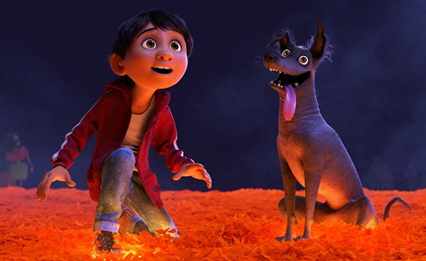
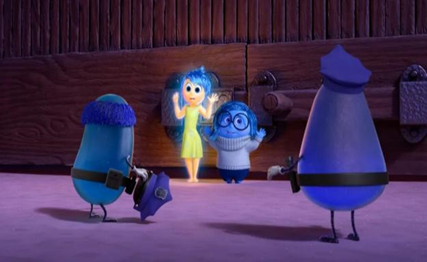
Figure 1: “Coco” with warm color [2] Figure 2."Inside Out" with cool color [2]
Diverse colours achieve dynamic interactions and, simultaneously, need to be complemented by animated storyboards with motion tension so that the audience's eyes can be drawn to them more efficiently and their emotions can be stimulated. The storyboard is the basis of visual narrative, through the animator of the camera angle, duration, transition nodes, and narrative rhythm of the appropriate control to make the story more up-and-down and have confusing effects. In the same imaginative space, the visual information collected by the eyeballs will be processed by the brain into the current plot direction envisioned by the audience. If the direction of the next storyboard is utterly different from what the audience has envisioned, it will significantly impact the audience's emotions. For example, in Christopher Nolan's Inception which have shown in Figure 3, the story's direction makes it difficult for the audience to predict and is full of freshness. This is not only because the concept of dreams in the film is entirely of randomness but also because the director has a good grasp of the rhythm of the shots. Sudden scene changes and camera angle shifts propel the story forward in ways that defy the audience's expectations and common logic. Although Inception is not an animation, this technique is still used in animation. The most typical example is Spirited Away by Hayao Miyazaki as shown in Figure 4. Unexpected supernatural phenomena, such as people turning into pigs, can open up new possibilities for the story, attracting the audience's attention and causing unexpected emotional fluctuations.
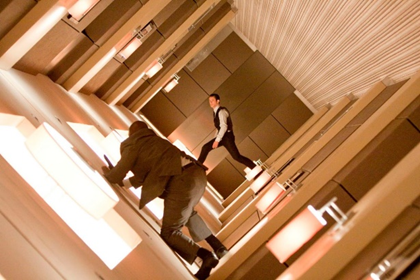
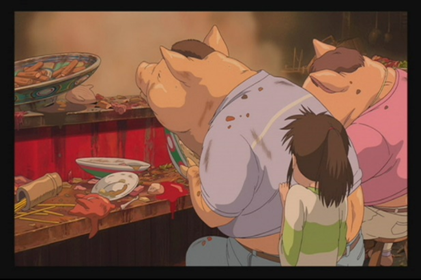
Figure 3: “Inception”[3]Figure 4: “Spirited Away [4]
2.2. Music and sound effects
Throughout history, countless musical masterpieces have been born out of different emotional atmospheres, with Maxim's Croatian Rhapsody and Beethoven's Moonlight representing exciting and soothing styles. Similarly, the soundtracks for the dissimilar parts of the animation also need to be worked on. From the story's beginning to the gradual transition to the climax and the transition to the end of the downbeat part, each section of the soundtrack holds a different emotion. The auditory information the human ear receives indirectly affects the heart rate and adrenaline, as well as the viewer's understanding of the animation [5]. For example, the cheerful ditty in the movie How to Train Your Dragon unveils the beginning of the animation at the beginning, which makes people happy. A high-pitched chant would make the plot uplifting on the way to climbing to the climax. Fast drum beats keep the tension high and focus attention during the climax and the ups and downs of the episode. The soothing sound of the piano at the end makes the meaning of the animation clear and emotional.
Unlike music, the role of sound effects tends to be more of an aid to the resolution of the images. Its existence makes the audience's analysis of the picture more three-dimensional in the sense of hearing. The sound of different objects hitting and banging will be different in other animation styles and contain different emotions. For example, footsteps in a church will reveal a sense of holiness, while footsteps in a hospital will reflect a sense of urgency. If the music is the steering wheel that controls the big picture, then the sound effects are the engine that moves forward because the sound effects interpret the sound form of every action in the animation. Once again, the audience can combine the plot with their imagination and understanding of the sound effects, which allows for emotional feedback on the action and stimulates subtle fluctuations in mood.
2.3. Emotional expression of animated characters
For the history of animation, every animated character created has always mirrored the reality of people, groups, or animal populations of all shapes and sizes. Animated characters are also the central vehicle for emotional expression in animation because, in the case of characters that are also human, the character's motivation makes it significantly less complicated for the viewer to empathise with the emotion [6]. The costume design, character features, movement, character core personality and voice-over of animated characters can maximise the empathy of viewers who share similar characteristics, thus triggering emotional fluctuations. In animation law, exaggerated movements often make the character's emotions clear. On a psychological level, giving up their defence mechanisms will be easier, resulting in mood swings. In addition to the action resonance, the character's virtual relationships and emotional interactions will cause the audience to empathise. In animation, a character's emotions must be very visualised, telling the audience about the character's likes and dislikes. People's hearts are complex and volatile, and their emotions are as intricate as a spider's web. Moreover, the defence mechanism is unconsciously activated in emotional communication between people, so it does not seem easy to express. An animated character's journey always makes one of the viewers feel close to them. If one finds ideas and concepts in an animated character that match his or her own, the emotions will start to resonate, which may be sympathy, understanding, and so on. Table 1 shows a comparison of the role of diverse animation presenting techniques.
Table 1: A comparison of the role of diverse animation presenting techniques.
Method | Traits | When to Use |
Visual Expression | Visually impact the brain | Essence needs to be implied, and the plot needs to be revealed |
Auditory Expression | Emotional contagion in the auditory sense | The atmosphere needs to be rendered, and the actions need to be interpreted. |
Character Analogy | Use character analogies to empathize with emotions. | Details need to be depicted, and the consistency and contradictions of the characters need to be reflected. |
3. Narrative structure and emotional resonance
Narrative structural strategies play a crucial role in all film and television works. Choosing different strategies for different film and television genres not only tells the story but also makes the emotional impact of the entire story more effectively impact the audience's thoughts and emotions. The difference is that in several animation forms, the choice of narrative strategy is sometimes more concise and efficient and sometimes detailed but full of twists, which keeps the audience's emotions highly sensitive and thus more effectively arouses empathy.
3.1. Narrative structure and emotional resonance
The narrative structure strategy can be used in different animation forms to create a wonderful sense of resonance. For example, the strategy of the Freytag’s Pyramid, named after the 19th-century German novelist Gustav Freytag, is named because the plot begins with an introduction, moves through rising action to climax, and then falls back to catastrophe, a process similar to a pyramid, which has directly shown in Figure 5. As one of the most classic narrative techniques, it is more suitable for short animated films with promotional or advertising purposes. In this type of short animated film, the protagonist's experiences are concise but logical, and most of the props obtained in the plot are used to help the protagonist achieve a particular goal to achieve the purpose of publicity. The Catastrophe stage is mainly used to sublimate the theme and positively clarify the idea. Therefore, this type of target audience, who has the same experience as the protagonist, is very likely to empathise with the protagonist and, having seen a positive ending, begin considering a product related to the animation they have watched.
Figure 5: Freytag’s Pyramid [7] |
In the current orthodox feature animation or animated film, the [8] Save the Cat Beat Sheet, as shown in Figure 6, is more widely used or modified to achieve the creative purpose of a theme. Hollywood screenwriter Blake Snyder created it, and it is a more detailed branch of the three-act structure. This type of narrative structure can effectively arouse the audience's emotions, even if the movie may be 90 minutes or even 150 minutes long, and the many elements contained in it will not make the audience stop thinking about the entire animation. At the beginning of the main story, the worldview of the Opening Image will be introduced engagingly. Understanding the background leads to the Theme Stated, which lays the groundwork for the relationship between the theme and the metaphor. This arouses the audience's curiosity about the plot and triggers a mood of exploration. Then a catalyst event occurs, pushing the protagonist towards a conflict, and after a preliminary resolution, "break into Act 2" and begin the plot of the sub-story, which will make the audience look forward to the story and growth of the characters, and unconsciously compare their own experiences with the difficulties the protagonist is currently encountering, generating initial empathy. The sub-story includes a series of secondary plots to highlight the theme and shape the protagonist.
One important element is the "promise of the premise," which fulfils the promise made to the audience during the build-up of the previous episode and satisfies the audience's need for entertainment. For example, in Tom and Jerry, Tom's owner explains in the story premise that Tom will cooperate with another cat to catch Jerry today. This plot tells the audience the story's direction. The excitement of Tom and the other cat cooperating to see Jerry on the way, the funny element of their lack of rapport that causes mistakes, and the promise of the absurdity of Jerry's clever ways to resolve crises all immerse the audience in an emotional and exciting experience.
At the midpoint of the story, the characters reach a turning point, which can also represent the new problems and challenges they face, creating new suspense for the audience and increasing the sense of suspense. At the same time, "Bad Guys Close in" indicates that the protagonist will suffer a major defeat. The sad atmosphere at this time will intensify the contrast with the "The Promise of the Premise" stage, creating a solid atmosphere contrast. When the protagonist "All is Lost," the subplot ends, and the plot enters the transition point "Dark Night of the Soul." The protagonist's self-interrogation, the influence and information from the surrounding environment, and the words of a friend or lover will all become turning points for the character to "break into Act 3". The clever thing is that this part has a particularly strong impact on the audience, because everyone has experienced failure at some point. The condition of empathy is forcibly attached to the minds of all viewers, increasing the area of stress in the emotional centre, which will catalyse the audience's empathic experience of feeling the same as the character. In the final image, the protagonist, who has found a solution, finally resolved the conflict and shown the audience his physical transformation, once again impacting the protagonist's character at the beginning and making it easy for them to reflect on a particular story about themselves.
Figure 6: Save the Cat Beat Sheet [9] |
3.2. Character development and emotional connection with the audience
A short-animated narrative is straightforward, with a beginning, middle and end. However, to make the audience feel the emotional fluctuations, the core content of the animation needs to have a powerful connection with the audience's emotions [10]. One of the main strategies for creating a solid connection is to use the emotional experiences and mental journeys of the animated characters, combined with the visual hints of the character's personality, to create a strong connection between the core of the animation and the development of the characters. In addition, through the storyboard's design, the animated characters' experiences and the experiences they gain from them can be described and reflected in specific details, which will touch people's hearts. Chiikawa, a Japanese animation derived from comics, is only about one minute long per episode, but it is still popular among young people in Asia. The reason for this is that the story brought by the three protagonists resonates strongly with young people living in a fast-paced society. The characterization elements of the animation include the healing and cute character settings, the pure friendship between friends who care about each other, and the courage that bursts out when facing difficulties. None fail to respond to young people's heart desires and appeal for pure positive energy. In contrast, the worldview of this intellectual property is not a rosy one, but one of contrasts, with the weak prey to the substantial danger lurking around every corner and difficulties in finding employment. It also corresponds to the life pressures and employment hardships that young people face in today's society. The entire animation conveys a magnetic field that young people can strongly empathise with, or each viewer can find a reflection of themselves in the three protagonists. Therefore, producing such a simple animation still contains excellent emotional value for young people.
3.3. Emotional impact of the plot
The emotional impact of the plot is very expressive, just like people always read the novel which can touch their hearts [11]. Whether it is the theme, conflict, metaphor or meaning, it all has emotional significance. Like Prince Rupert's Drop, the human heart is a solid outer shell concealing a weak tail. The emotions of family, friendship, love, loss, fear, joy, anger and sorrow shown in animated plots, combined with artistic images, will turn these complex emotions into moments that strike directly at the heart. In particular, the in-depth portrayal of specific details, such as the snack left behind by the protagonist's family after their departure: the taste of the first piece brings back memories, the trembling of the right hand accompanies the second piece, and the third bite is mixed with the salty taste of tears. Each piece represents an emotional impact, giving the audience an immersive experience that strikes directly at the soul and resonates effectively. In “Up,” after Ellie dies, a quietly rocking chair she left behind serves as a clue to all the memories of her. Countless fragments of memory will spring forth like a spring of water through a chair and then come together to form a poignant memory. Although the image is as simple as a chair, its weight of emotion is quite strong. Another example is in Grave of the Fireflies when a fruit canning jar is linked to the death of the protagonist's younger sister due to malnutrition caused by the war, it is destined that this simple everyday object will bear a heavy burden of negative emotions.
Therefore, as long as the plot is linked to the emotional experiences of the characters, even the smallest details will be accompanied by the birth of symbolic meaning.
4. Psychological interaction between animation and audience
Psychological interaction is the finger that strikes the emotional metronome. The emotional appeal of animation lies not only in the artistic expression of the images, music, and plot but also in the understanding and influence of the audience's psychology. By understanding the audience's psychology and grasping the emotions they desire, creators can produce animations that resonate deeply with different audiences.
4.1. Audience psychology: mechanisms of emotional response
From a psychological perspective, suggestion and emotional contagion can be identified as mechanisms related to cognitive processes and social learning theory. Cognitive biases and emotional responses can subconsciously trigger emotional resonance.
The concept of suggestion is closely related to emotional priming, where subtle stimuli (such as visual cues) subtly influence the audience's cognitive responses, and it is challenging to realise this psychological manipulation. The contrast of colours, light and shade, and the emotional symbolism of colours in animation symbolise emotional arousal. When most of the characters in the scene are bathed in the sun, but a few stand in the shade, the audience will isolate the characters in the shade like the light, unconsciously associating them with negative emotions. The source of these reactions is the automatic processing and filtering of stereotypes by the human brain for visual cues they are familiar with. Subtle guidance will make the audience unconsciously judge the fate of the characters and respond emotionally without a clear story direction.
In addition, the mechanism of emotional contagion [12] can be analysed using the interaction between the mirror neuron system and social learning theory. In social learning theory, people are often considered “repetition machines” that unconsciously imitate others to learn emotional responses. Babies' cognition of many things also comes from simple imitation and observation. They see their parents smile and hear them laugh, and they unconsciously start laughing. This is highly similar to the way animation arouses emotions in the audience. By controlling the plot or the characters' expressions, such as funny plots and characters laughing, the audience's mirror neurons are activated, causing the audience to subconsciously be influenced by these emotions and imitate the observed behaviours and emotions. The emotional feedback from the characters is amplified through the exaggeration techniques of animation to ensure that the mechanism's efficiency can be maximised and exploited.
The theory of cognitive dissonance [13] can also be cleverly applied to emotional guidance, as it is responsible for emotional resonance caused by unexpected emotional shifts. When the audience instinctively expects a happy ending due to the guidance of the plot but sees a sad ending, the brain will experience a sense of cognitive dissonance due to the inconsistency of the plot. People instinctively seek a solution to the disharmony, amplifying the emotional impact. Under the premise of this urgent search for a solution, if a flashback of a character's memory or plot is inserted in the subsequent plot to provide an answer, and the audience finds it reasonable, then this sense of disharmony will be eliminated. The purpose of this is to mobilise the emotional activity of the audience well, just like the muscles of the human body, which become stronger through constant stretching and contraction. Similarly, the audience's emotions will become rich and colourful, making them more likely to empathise.
Therefore, through the many psychology theories, animators and screenwriters can more effectively guide and control the audience's emotions, giving the audience a sense of being immersed in the scene and emotionally fulfilled.
4.2. The influence of cultural differences
Cultural differences are a factor that significantly influences how an audience understands an animation and how they understand and empathise with the logic of the characters' actions or symbolic things. In Western culture, the four-legged dragon is seen as a symbol of evil, but in some animation themes, some four-legged dragons have gentle and kind habits. This breaks away from stereotypes to appeal to the aesthetic sensibilities of viewers from all cultures as much as possible, break free from constraints, and find new ways of creating simultaneously. Another example is that in Chinese culture, girls will hold hands when going out shopping together, which is a symbol of their amicable relationship. However, in Japanese culture, girls holding hands will only be seen as lesbians because they have an extreme sense of boundaries in defining intimacy. Therefore, it is not uncommon for Japanese people to misunderstand scenes in Chinese animations where girls hold hands. On the other hand, creating animations that address the LGBT community based on such misunderstandings is also a signal that the LGBT community can gradually appear in works of art, thereby broadening cultural boundaries.
5. Conclusion
This paper provides an in-depth analysis of various techniques employed in animation creation to explore their impact on eliciting emotional responses from audiences. These techniques include the visual symbolism of colors, character design, auditory elements such as music and sound effects, as well as narrative strategies and pacing. Furthermore, this study examines the influence and significance of psychological concepts such as suggestion, emotional contagion, cognitive dissonance, and the mirror neuron system within the context of animated storytelling. Through a case study analysis of multiple animated films, this paper effectively demonstrates how the synergistic application of these techniques can enrich animated scenes and enhance emotional resonance between the content and the audience. The interplay between animation and psychological mechanisms can evoke a variety of emotional responses, while psychological mechanisms endow animated works with emotional appeal and immersive qualities.
Looking towards the future, advancements in emerging animation production tools are expected to further propel research in this field. For instance, the utilization of artificial intelligence technologies will allow for more precise analysis and reflection of audience emotional fluctuations and feedback, thereby laying the groundwork for exploring new methods to enhance the depth of animated narratives and the excitement of their plots. By continuously integrating innovations from both psychology and the arts, and by investigating their interactions, artists and scientists can collaboratively create more emotionally engaging and immersive animated works that cater to the growing audience demand for emotional value.
References
[1]. Beauchamp, R. (2012). Designing sound for animation. Routledge.
[2]. Borodina, M. (2019). The art of Spirited Away. Japan: M. Borodina Publishing.
[3]. Buchanan, A. (2007). Facial expressions for empathic communication of emotion in animated characters. In Animation studies: Animated dialogues Valencia. Society for Animation Studies. (pp. 75-83).
[4]. Freytag’s Pyramid: Definition and examples of dramatic structure. (2023). Retrieved from https://kindlepreneur.com/freytags-pyramid/
[5]. Hatfield, E., Cacioppo, J. T., & Rapson, R. L. (1993). Emotional contagion. Current Directions in Psychological Science, 2(3), 96-100.
[6]. Harmon-Jones, E., & Mills, J. (2019). An introduction to cognitive dissonance theory and an overview of current perspectives on the theory.
[7]. Jiang, L. (2022). Expression of emotion and art in film and television animation from the perspective of color psychology. Psychiatria Danubina, 34(Suppl 5), 69-69.
[8]. Kennedy, A. (2014). The effect of color on emotions in animated films (Master’s thesis, Purdue University). Retrieved from https://docs.lib.purdue.edu/open_access_theses/201/
[9]. Kermode, M. (2010). The sense of an ending: Some versions of the film noir. New York: G. C. Books.
[10]. Snyder, B. (2023). Save the cat. Noura Books.
[11]. Save the cat beat sheet: 15 powerful steps to outline your story. (2013). Retrieved from https://bookbird.io/save-the-cat-beat-sheet/
[12]. Van Rooij, M. (2019). Carefully constructed yet curiously real: How major American animation studios generate empathy through a shared style of character design. Animation, 14(3), 191-206.
[13]. Oatley, K. (2002). Emotions and the story worlds of fiction. In Narrative impact: Social and cognitive foundations (pp. 39-69).
Cite this article
Cai,Z. (2024). The Emotional Impact of Animation on Its Audience. Communications in Humanities Research,52,18-26.
Data availability
The datasets used and/or analyzed during the current study will be available from the authors upon reasonable request.
Disclaimer/Publisher's Note
The statements, opinions and data contained in all publications are solely those of the individual author(s) and contributor(s) and not of EWA Publishing and/or the editor(s). EWA Publishing and/or the editor(s) disclaim responsibility for any injury to people or property resulting from any ideas, methods, instructions or products referred to in the content.
About volume
Volume title: Proceedings of 3rd International Conference on Interdisciplinary Humanities and Communication Studies
© 2024 by the author(s). Licensee EWA Publishing, Oxford, UK. This article is an open access article distributed under the terms and
conditions of the Creative Commons Attribution (CC BY) license. Authors who
publish this series agree to the following terms:
1. Authors retain copyright and grant the series right of first publication with the work simultaneously licensed under a Creative Commons
Attribution License that allows others to share the work with an acknowledgment of the work's authorship and initial publication in this
series.
2. Authors are able to enter into separate, additional contractual arrangements for the non-exclusive distribution of the series's published
version of the work (e.g., post it to an institutional repository or publish it in a book), with an acknowledgment of its initial
publication in this series.
3. Authors are permitted and encouraged to post their work online (e.g., in institutional repositories or on their website) prior to and
during the submission process, as it can lead to productive exchanges, as well as earlier and greater citation of published work (See
Open access policy for details).
References
[1]. Beauchamp, R. (2012). Designing sound for animation. Routledge.
[2]. Borodina, M. (2019). The art of Spirited Away. Japan: M. Borodina Publishing.
[3]. Buchanan, A. (2007). Facial expressions for empathic communication of emotion in animated characters. In Animation studies: Animated dialogues Valencia. Society for Animation Studies. (pp. 75-83).
[4]. Freytag’s Pyramid: Definition and examples of dramatic structure. (2023). Retrieved from https://kindlepreneur.com/freytags-pyramid/
[5]. Hatfield, E., Cacioppo, J. T., & Rapson, R. L. (1993). Emotional contagion. Current Directions in Psychological Science, 2(3), 96-100.
[6]. Harmon-Jones, E., & Mills, J. (2019). An introduction to cognitive dissonance theory and an overview of current perspectives on the theory.
[7]. Jiang, L. (2022). Expression of emotion and art in film and television animation from the perspective of color psychology. Psychiatria Danubina, 34(Suppl 5), 69-69.
[8]. Kennedy, A. (2014). The effect of color on emotions in animated films (Master’s thesis, Purdue University). Retrieved from https://docs.lib.purdue.edu/open_access_theses/201/
[9]. Kermode, M. (2010). The sense of an ending: Some versions of the film noir. New York: G. C. Books.
[10]. Snyder, B. (2023). Save the cat. Noura Books.
[11]. Save the cat beat sheet: 15 powerful steps to outline your story. (2013). Retrieved from https://bookbird.io/save-the-cat-beat-sheet/
[12]. Van Rooij, M. (2019). Carefully constructed yet curiously real: How major American animation studios generate empathy through a shared style of character design. Animation, 14(3), 191-206.
[13]. Oatley, K. (2002). Emotions and the story worlds of fiction. In Narrative impact: Social and cognitive foundations (pp. 39-69).





